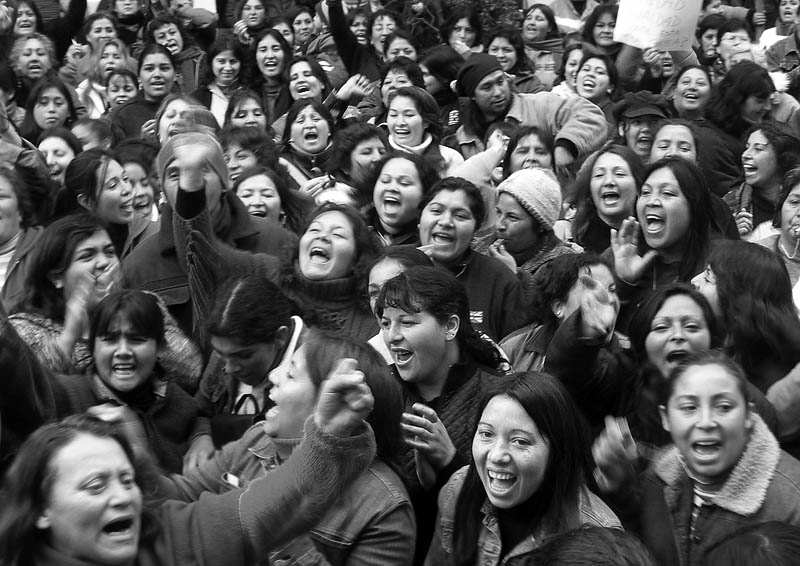On October 13-15, Saint Petersburg will host the Third Eurasian Women’s Forum primarily to review how women have performed in men’s dominated world, identify challenges and roadblocks on their way to gender equality and fight for higher social status and, of course, outline new strategic goals for the future.
By Kester Kenn Klomegah
Women have come a long way, indeed, since first their conference held 1986 in Beijing, China and resultantly declared March 8 – as International Women’s Day marks annually throughout the world. Women have taken up the fight, sometimes collaborating with women-conscious men and thus paving the way up to the top echelon in all economic and social spheres. Women now have a structured organization from the grassroots, in all countries, and up to regional organizations and to the United Nations.
Eurasian Women, the largest women group in the region, meet at the initiative of Federation Council Speaker Valentina Matvienko. The first forum held in 2015, and the second in 2018. The forum is generally held under the aegis of the Inter-Parliamentary Assembly of the Commonwealth of Independent States (CIS) and the Federation Council of the Federal Assembly of the Russian Federation.
Its participants include female leaders from the CIS and other foreign countries, women representatives of executive government bodies, international organizations, business circles, the scientific community, public and charity organizations, and respected members of the international women’s movements and associations.
This forum has won wide recognition as an effective mechanism of interaction and dialogue for women who are influencing social, political and economic decisions. It facilitates the growing participation of women’s movements in resolving global challenges of our time.
The chosen theme of the third Forum “Women: A Global Mission in a New Reality” has much significance for today’s world. Boosting international cooperation to enhance the role of women in order to meet the goals of sustainable development, forming women’s agenda and new approaches to solving global problems in the new reality – these are the main objectives for participants and organizers.
The business programme of the third forum includes plenary and expert sessions organized by international organizations and associations, discussions, an offsite meeting of the Women 20 (W20), public and private sector talks, business dialogues, webinars, workshops, and business breakfasts and a number of other events.
The participants will devote key debates to the role of women in ensuring global security, the transition to new models of economic growth and social progress, overcoming the adverse consequences of the coronavirus pandemic, developing healthcare, balancing universal digitization, and addressing global environmental and climate problems.
Expert sessions will be for international organizations and associations. Those include field sessions of Women 20, the UN session on industrial development (UNIDO), the World Bank session, the BRICS Women’s Business Alliance meeting, international club of APEC BEST AWARD winners and participants, and International Club of Women Regional Leaders.
For the first time, the Forum will feature meeting of the International Working Group of the Organization for Economic Co-operation and Development’s Nuclear Energy Agency on improving gender balance in the nuclear energy industry.
Throughout the world, there is a growing demand for female leadership. Research has shown that companies with women on their boards of directors enjoy better results. As new skills requirements are emerging, so educational programmes for female leaders are becoming critical. The ability to share experience at an international level of implementing such programmes can help foster joint initiatives. This is also tur about women in political sphere.
In the face of global challenges, there is an increasing need for a new paradigm, along with a renewed focus on changing attitudes to women. Women have made an enormous contribution to efforts to improve health, raise life expectancy, and improve quality of life. These are the first role as women in the family, and this is unchangeable fact in the world.
The BRICS Women’s Business Alliance was first presented at the 2nd Eurasian Women’s Forum. The leaders of Brazil, India, China, Russia, and South Africa gave their unanimous support to the initiative, and adopted the declaration on the establishment of the alliance. Last year (2020) saw the official launch of the BRICS Women’s Business Alliance.
The alliance seeks to implement multilateral cooperation projects aimed at consolidating and strengthening its role in the global economic agenda. The alliance’s areas of focus include the development of innovation, healthcare, food and environmental security, an inclusive economy, the creative industries, and tourism.
Women have been forging alliances and ahead of this forum for instance, the Women’s Business Association of the Federation of Indian Chambers of Commerce and Industry (FLO FICCI), considered as the largest women’s business association in India, signed a memorandum of understanding with Russia. This collaboration aims at developing women’s entrepreneurship, social communications and at creating favourable conditions for cooperation between business circles in Russia and India.
It plans promoting entrepreneurship and professional excellence through seminars, conferences, lectures, trainings, and other events aimed at encouraging and stimulating the involvement of the skills, experience, and energy of women in all sectors and at all levels of economic activity.
The Eurasian Women Association has so many programmes and projects with other women’s groups and associations in the Eurasian region, in Asia, Africa, and Europe.
The Eurasian Women forum will be offline using modern formats such as video conferencing and online broadcast. This form will ensure the extended outreach and provide audience engagement. The interactive format will be in strict accordance with safety measures aimed at preventing the spread of Covid-19. It is drawn up by the organizing committee and in line with approved requirements from the World Health Organization.






